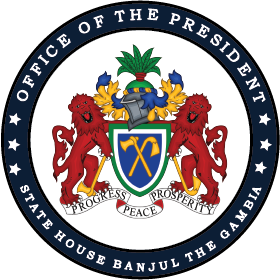CONTENT
The Child Protection Strategy (2016–2020) of The Gambia aims to ensure that all children are protected from violence, abuse, exploitation, and neglect. It envisions a comprehensive child protection system that safeguards children's rights and enables them to achieve their full potential.
Specific Objectives
-
Promote the Right to Protection: Raise awareness and create a national consensus on child protection as a fundamental right.
-
Strengthen Legal Frameworks: Enhance and align child protection laws with international standards while addressing gaps in legislation.
-
Improve Coordination and Collaboration: Establish effective partnerships among all child protection actors, guided by the Child Protection Sub-Committee.
-
Develop Human and Financial Capacity: Build the skills of child protection stakeholders and ensure sustainable funding for child protection initiatives.
-
Expand Preventive and Protective Services: Provide accessible and high-quality services to prevent and address child protection issues.
-
Create Knowledge and Information: Develop systems for data collection, monitoring, and evaluation to inform decision-making and improve interventions.
Summary of the Content
The strategy adopts a systems approach to child protection, emphasizing the need for collaboration among government, communities, and non-governmental organizations. It identifies key child protection challenges in The Gambia, such as child marriage, female genital mutilation, child labor, and violence against children, which are exacerbated by poverty and limited resources.
The strategy outlines six long-term goals and corresponding objectives, supported by actionable steps to achieve them. It highlights the importance of strengthening legal frameworks, building institutional capacity, and expanding services to protect children. The Child Protection Sub-Committee plays a central role in coordinating efforts and ensuring alignment with the strategy.
The plan envisions a future where children in The Gambia are safe, empowered, and able to thrive in a protective environment. It emphasizes the importance of community involvement, sustainable funding, and continuous monitoring to achieve its goals.
-
Ministry of Public Service
6 documents -
Office of The Vice President
3 documents -
Ministry of Agriculture, Livestock and Food Security
8 documents -
Ministry of Basic and Secondary Education
2 documents -
Ministry of Defence
3 documents -
Ministry of Environment, Climate Change and Natural Resources
9 documents -
Ministry of Finance and Economic Affairs
11 documents -
Ministry of Foreign Affairs and International Cooperation
2 documents -
Ministry of Health
30 documents -
Ministry of Higher Education, Research, Science and Technology
3 documents -
Ministry of Communications and Digital Economy
24 documents -
Ministry of Interior
3 documents -
Ministry of Justice
1 document -
Ministry of Petroleum and Energy
5 documents -
Ministry of Trade Industry and Employment
8 documents -
Ministry of Transport Works and Infrastructure
3 documents -
Ministry of Tourism and Culture
3 documents -
Ministry of Women, Children and Social Welfare
12 documents -
Ministry of Youths and Sports
2 documents -
Ministry of Land and Regional Government
1 document -
Ministry of Fisheries and Water Resources
3 documents -
Office of The President
0 documents

